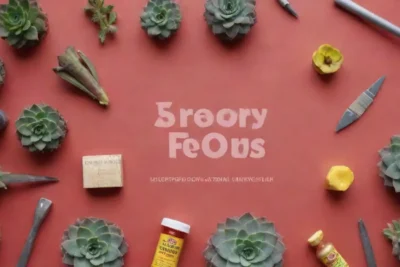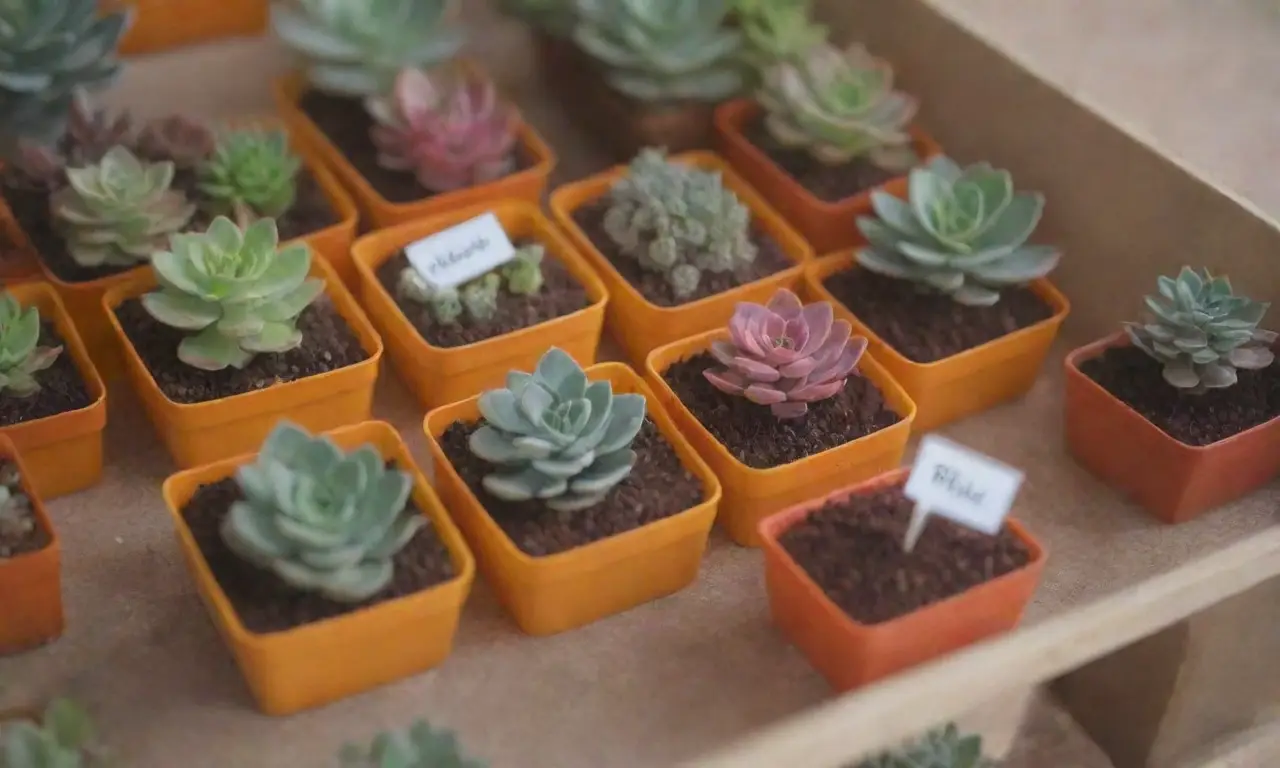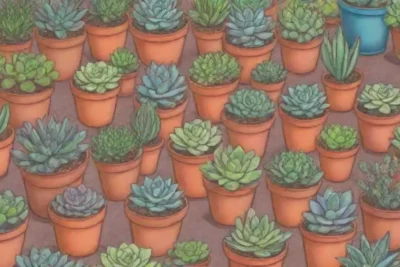
Best Labeling Tools for Organizing Your Succulent Collection

Introduction
In the world of plant enthusiasts, succulents have carved out a beloved niche. Their versatility, variety, and generally low maintenance make them an appealing choice for both novice and expert gardeners. However, with such a diverse range of species, it can become challenging to keep track of plant names, care instructions, and specific needs. This is where labeling tools come into play, serving not just as identifiers but as essential guides to successful succulent care.
This article will delve into the most effective and popular labeling tools available for organizing your succulent collection. We will explore various types of labels, their pros and cons, and how they can contribute to maintaining the health and aesthetics of your plants. By the end of this guide, you will be equipped with a wealth of knowledge on how to choose the best labeling tools tailored to your unique succulent collection.
Importance of Labeling Tools for Succulent Care
Labeling tools are not merely decorative; rather, they serve a vital organizational purpose. Having a well-labeled succulent collection allows you to identify different species easily, ensuring you provide each plant with the exact conditions it thrives in. Temperature, light requirements, and water frequency can vary significantly between succulent species. Without clear labels, you may inadvertently neglect a plant's specific needs, leading to poor health or even death.
Moreover, labeling is crucial for educational purposes. If you’re a gardening enthusiast who loves sharing your plants with friends or family, they will appreciate being able to identify the species. This not only fosters conversation but also allows you to share tips and care techniques for various succulents. In a more extensive collection, plant identification becomes a necessity. You can keep track of new acquisitions, provide updates on each plant’s growth, or even keep notes about any care challenges you encounter.
Finally, the aesthetics of your garden or collection shouldn’t be overlooked. Neatly labeled plants can enhance the visual appeal of your arrangements and can even serve as décor. Labels can be customized to fit the theme of your garden, ensuring that your succulent collection remains a beautiful sight to behold while being practical at the same time.
Types of Labeling Tools
When it comes to choosing labeling tools, a one-size-fits-all approach does not apply. There’s a wide variety of labeling tools suited to different environments and preferences. Below, we will cover several of the most effective labeling options available, detailing their functionalities and ideal applications.
Plastic plant tags are among the most common options for labeling succulents. They come in various sizes and colors, making them versatile enough to suit any garden aesthetic. One of the main advantages of plastic tags is their durability—they can withstand exposure to the elements without fading or deteriorating. Many labels come with a built-in space for writing, making it easy to record the plant's name and other essential care details.
 Creating a Perfect Succulent Garden with the Right Tools
Creating a Perfect Succulent Garden with the Right ToolsThese tags are generally weather-resistant, meaning you can use them in both indoor and outdoor settings. However, one drawback is that over time, some labels may become brittle due to prolonged sun exposure, leading to breakage. To counter this, you can opt for UV-resistant options or simply replace them periodically to maintain your garden's organization.
For those looking for a more customized approach, consider using a permanent marker or a label maker with plastic tags. This will allow for precise writing and can add a personal touch to your succulent collection. These tags work exceptionally well for those with larger collections, as they can effectively cater to individual plants without cluttering the visual impression of your arrangement.
Chalkboard Labels
Chalkboard labels offer a charming, rustic look that pairs beautifully with a succulent collection. These labels are made from chalkboard material, allowing you to write and rewrite plant names and care instructions using chalk or a chalk marker. Their design lends an organic quality to your garden while providing a practical way to keep your plants organized.
One of the significant advantages of chalkboard labels is their reusability. As your collection evolves, you can change the plant names or swap them around without needing to purchase new labels. This flexibility is particularly appealing for those who frequently engage in plant trades or swaps.
However, there are some considerations to keep in mind with chalkboard labels. They tend to be less durable than plastic tags, especially in wet or humid conditions. It’s advisable to place them in areas where they won’t be directly exposed to moisture or to treat them with a sealant to enhance their longevity. Still, if aesthetics matter to you and you're willing to put in a little extra effort, chalkboard labels can make your succulent collection stand out.
Metal Plant Markers
For those seeking durability combined with elegance, metal plant markers may be the ideal choice. Typically made from aluminum or stainless steel, these markers are not only robust but also have a sleek appearance that adds sophistication to any succulent arrangement. Metal markers can withstand harsh weather conditions, making them suitable for both indoor and outdoor environments.
The primary purpose of metal markers is permanence. Many come pre-engraved with plant names, while others allow you to use a permanent marker or etching tool to create lasting labels. This longevity can be particularly beneficial for serious collectors who wish to keep track of their plants over long periods. Notably, they won't fade or become brittle like plastic or chalk labels, which means your investment will remain intact.
 Seasonal Gardening Tools for Year-Round Succulent Care
Seasonal Gardening Tools for Year-Round Succulent CareThe only downside to metal markers is the cost, as they tend to be more expensive than their plastic or chalkboard counterparts. Additionally, the installation might require digging them into the soil, which can sometimes disrupt the roots of your plants if not done carefully. Nonetheless, metal markers are excellent for anyone looking to invest in high-quality labeling tools that combine form and function.
DIY Labeling Options

Often, the best options for organizing your succulent collection can be homemade. DIY labeling tools allow for creativity and personalization, enabling you to craft markers that fit your garden's unique aesthetic perfectly. Below are a few ideas tailored to succulent enthusiasts.
Wine Corks
One fun and eco-friendly labeling option is to use wine corks. With a little creativity, you can transform these everyday items into charming plant markers. Simply write the plant name on the cork with a permanent marker, and insert a small stick or skewer into the cork. Then, place the skewer into the soil adjacent to the plant. This not only reduces waste but adds a rustic feel to your succulent collection.
Wine corks hold up surprisingly well, adding character to your arrangements. However, they may not be as durable as other options in extreme weather conditions, so it's best to use them in indoor arrangements or sheltered outdoor areas.
Repurposed Household Items
Consider getting creative with repurposed household items. Items like ice pop sticks, old ceramic tiles, or even rocks can serve as unique labels. You can write directly on these materials or paint them with colors that match your garden aesthetic. Using items you already have at home not only saves money but also allows you to showcase your personality in your garden.
While repurposed items can create unique labels, their longevity obviously depends on the material. Non-waterproof choices may wear out quickly, which is worth considering as you devise your labeling strategy. Nevertheless, this is an enjoyable and environmentally friendly approach to plant labeling.
 Understanding Different Types of Spades for Succulent Soil
Understanding Different Types of Spades for Succulent SoilPrintable Labels
Another DIY option is to create printable labels. Using design software or templates available online, you can craft custom labels that suit your style. Simply print them on adhesive paper, trim them to size, and stick them to your plants. This option enables you to incorporate colors, images, and personalized fonts to match your collection.
Printable labels can easily be adjusted or updated as your succulent interests evolve. The negative aspect is that they may not be as durable as physical labels like metal or plastic, especially in outdoor settings. Nonetheless, they can initially offer an excellent combination of personalization and organization for indoor succulent collections.
Key Features to Look For
When considering labeling tools for your succulent collection, there are several key features to keep in mind to ensure you choose the best options for your needs.
Durability
Durability is perhaps the most crucial factor. Depending on whether your succulents are indoors or outdoors, you need to select materials that will withstand your environment's conditions. Consider factors such as sun exposure, humidity, and rain when making your choice. Labels that can endure these elements will save you from the hassle of continual replacements.
Readability
Readability is essential, especially in larger collections where quick identification is necessary. Opt for markers that contrast well with the label material. Choose legible fonts if you're printing labels or keep your handwriting clear and bold when writing directly on them. Color-coding specific groups of succulents can also enhance readability and organization.
Customization
If you are particularly fond of personalization, consider how customizable your labeling options are. Whether you want to display unique designs, plant species notes, or care recommendations, being able to tailor labels to your taste will make your succulent collection feel more personalized.
Cost Efficiency
Finally, cost efficiency must be taken into account, especially if you have a large succulent collection. While some premium options may offer durability and aesthetic appeal, don’t overlook more affordable choices that can also accomplish the task effectively. Finding a balance between quality and budget is essential for any passionate gardener.
 Top 10 Hand Tools for Ultimate Succulent Care and Maintenance
Top 10 Hand Tools for Ultimate Succulent Care and MaintenanceConclusion
In summary, organizing your succulent collection through appropriate labeling tools can greatly enhance not only the enjoyment of your plants but also their overall health. From plastic plant tags to chalkboard labels and metal markers, the variety of options available allows you to select tools that cater to your specific aesthetic and practical needs.
Incorporating DIY options can also lend a distinctive touch to your garden while preserving your budget. Whether you go for reusing wine corks or embrace the creativity of repurposed household items, these personal choices will help your collection stand out. As you weigh the pros and cons of each labeling method, consider the factors of durability, readability, customization, and cost efficiency for the best outcome.
Ultimately, the labeling tools you choose will not only contribute to the organization of your succulent collection but will also deepen your connection to each plant. By effectively managing your collection, you can ensure each succulent receives the specialized care it needs while creating a visually stunning display that brings joy to your home. Happy gardening!
If you want to read more articles similar to Best Labeling Tools for Organizing Your Succulent Collection, you can visit the Gardening Tools category.



You Must Read